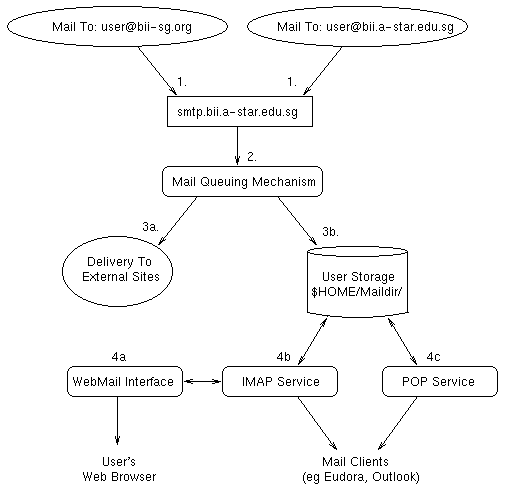
| Stage | What happens |
| 1. | A user from the Internet (or from within BII) sends mail. The mail is received by the server smtp.bii.a-star.edu.sg. The user's email client has finished transmitting the mail and its job is now complete. |
| 2. | The mail is now held in the queue while Qmail decides on how to perform delivery. For example, a single mail may have many multiple receipients, some within BII, some outside of BII. |
| 3a. | Qmail needs to perform a delivery to an external site. If the mail delivery is successful, its job is complete. If the delivery failed with a temporary error (eg, network down), Qmail will attempt to delivery for up to 1 week. If there is a permanent error (eg, invalid destination address), Qmail gives up. The user receives a bounced mail message. |
| 3b. | The mail is delivered to a BII user's account. Each mail is stored as an individual file in directory $HOME/Maildir/new. If the user has exceeded the quota, Qmail will retry the delivery for up to 1 week. |
| 4c. | A POP service allows email clients to retrieve mail from the user's $HOME/Maildir directory. The POP over SSL service does the same job. |
| 4b. | An IMAP service allows email clients to retrieve mail from the user's $HOME/Maildir (almost similar to POP). However, the IMAP protocol has many more features than POP, for example it allows for various mail folders to be stored on the server. The IMAP over SSL service does the same job. |
| 4a. | BII's webmail service is actually an IMAP to web interface. The user's interactions with the webmail interface are translated to IMAP calls. Thus the webmail interface will always be slower than using a mail client which directly communicates with IMAP or POP. |